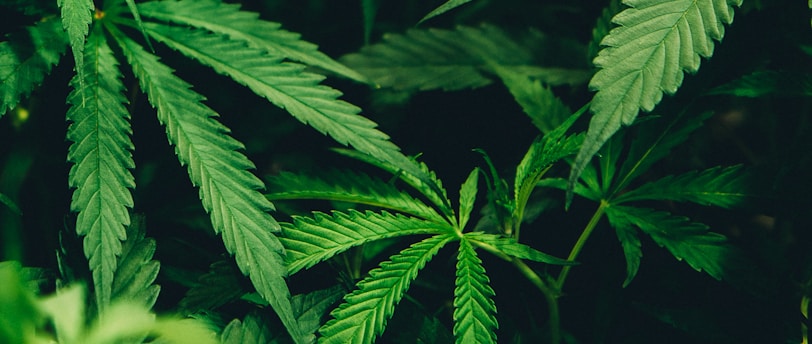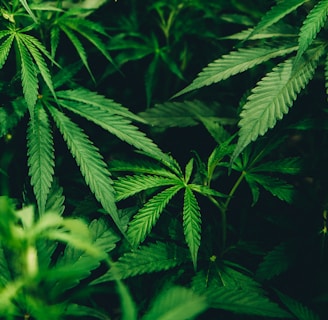Cannabis Tolerance: Understanding, Managing, and Taking a T-Break
Cannabis has been used for centuries for its medicinal and recreational properties. However, frequent cannabis use can lead to a phenomenon known as tolerance. In this article, we will explore what cannabis tolerance is, how it happens, the concept of a "t-break," and how to effectively take a tolerance break.
CANNABIS HEALTH
11/28/20233 min read


What is Cannabis Tolerance?
Cannabis tolerance refers to the reduced sensitivity to the effects of cannabis that occurs with regular use. When you consume cannabis regularly, your body's endocannabinoid system adjusts to the presence of cannabinoids, resulting in a decreased response to the same dose of cannabis over time.
As tolerance develops, individuals may find that they need to consume larger amounts of cannabis to achieve the desired effects. This can be problematic, as it may lead to increased consumption, potential health risks, and diminished therapeutic benefits.
How Does Cannabis Tolerance Happen?
The development of cannabis tolerance is a complex process involving various mechanisms within the body. When cannabis is consumed, the active compounds, such as THC and CBD, interact with the body's endocannabinoid system, specifically the CB1 receptors located in the brain and central nervous system.
Tolerance to cannabis occurs when the brain becomes less responsive to the effects of the drug over time. This process is mainly attributed to the desensitization of cannabinoid receptors in the brain. When cannabis is consumed, it activates these receptors, leading to various psychoactive effects. However, with regular and prolonged use, the brain adapts by reducing the number of available receptors and altering receptor signaling. This downregulation of receptors reduces the overall sensitivity to cannabinoids, resulting in the development of tolerance. Additionally, the brain may also increase the production of enzymes that break down cannabinoids, further diminishing their effects and contributing to the development of tolerance. These adaptive changes in the brain contribute to the diminished response to cannabis, requiring higher doses to achieve the same level of intoxication or relief. Understanding these mechanisms is crucial for developing effective strategies to manage tolerance and optimize the therapeutic potential of cannabis.
What is a T-Break?
A tolerance break, often referred to as a "t-break," is a period of abstinence from cannabis use. It allows the body to reset and regain its sensitivity to the cannabinoids present in cannabis. During a t-break, the endocannabinoid system has an opportunity to rebalance itself, leading to a reduction in tolerance.
What Does a T-Break Do?
Taking a t-break can have several benefits for cannabis users, including:
Reduced Tolerance: The primary goal of a t-break is to reduce cannabis tolerance. By abstaining from cannabis use, the body's endocannabinoid system can reset, resulting in increased sensitivity to cannabinoids.
Enhanced Effects: After a t-break, individuals often find that they can achieve the desired effects with smaller amounts of cannabis. This can lead to cost savings and a more efficient and enjoyable cannabis experience.
Improved Therapeutic Benefits: For medical cannabis users, a t-break can help restore the effectiveness of cannabis as a treatment option. By lowering tolerance, patients may experience improved pain management, reduced anxiety, and better sleep.
Clearer Mind and Increased Motivation: Regular cannabis use can sometimes lead to brain fog and a decrease in motivation. Taking a t-break allows the mind to clear and regain focus, leading to increased productivity and overall well-being.
How to Take a T-Break
When embarking on a t-break, it is essential to have a plan in place to maximize its effectiveness. Here are some tips to help you successfully take a tolerance break:
Set a Duration: Determine the length of your t-break based on your personal goals and level of tolerance. It can range from a few days to several weeks, depending on individual preferences.
Inform Others: Let your friends or cannabis-consuming companions know about your decision to take a t-break. This will help you avoid tempting situations and receive support during the process.
Remove Temptation: Clear your surroundings of any cannabis products to minimize the temptation to use during your t-break. This includes removing any paraphernalia and deleting cannabis-related apps or contacts from your phone.
Find Alternatives: During your t-break, explore other activities or hobbies that can help distract you from the absence of cannabis. Engaging in exercise, meditation, or spending time with loved ones can be beneficial.
Practice Self-Care: Taking care of your physical and mental well-being is crucial during a t-break. Ensure you get enough sleep, eat a balanced diet, and engage in activities that bring you joy and relaxation.
Stay Accountable: Consider enlisting the support of a friend or joining online communities where you can share your progress and receive encouragement from others going through a t-break.
Gradual Reintroduction: After your t-break, consider starting with smaller doses of cannabis to gauge your new sensitivity. This will help you avoid immediately returning to the same level of tolerance you had before the break.
Conclusion
Cannabis tolerance is a natural response to regular cannabis use, but it can be managed effectively through tolerance breaks. By taking a break from cannabis consumption, users can reset their body's sensitivity to cannabinoids, leading to enhanced effects, reduced tolerance, and improved therapeutic benefits.
If you find that your cannabis use is becoming less effective or that you need increasingly higher doses to achieve the desired effects, it may be time to consider taking a t-break. Remember to plan your break, stay accountable, and practice self-care during this period. By doing so, you can optimize your cannabis experience and regain the benefits that drew you to cannabis in the first place.
Contact
onelovecannabis@outlook.com
Subscribe to our newsletter
Disclaimer: The thoughts, ideas, and opinions expressed in this blog site are solely those of the author. They are not meant to be a substitute for professional medical and mental health guidance. Before following the advice given, it is always advisable to consult with your healthcare team to ensure no possible adverse affects or interactions with other treatments you may be using. Should you make the choice to use cannabis products, you do so at your own risk and assume all responsibility of a health or legal nature. The author does not encourage use of cannabis is those under 25 years of age, individuals in area where they do not have access to legal cannabis, or in individuals with pre-existing conditions that could be negatively impacted as the result of cannabis use.
